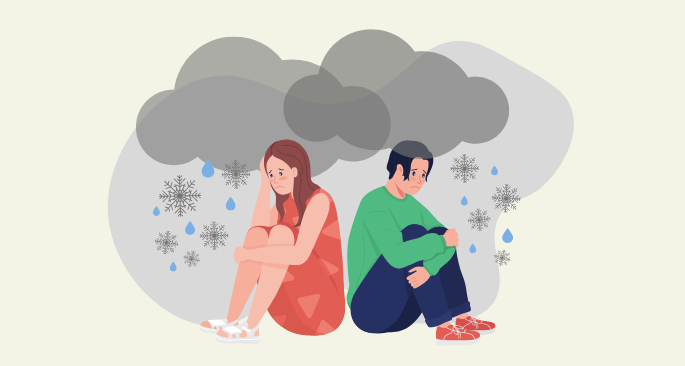**If you have noticed significant changes in your mood or behavior since the seasons have changed, you could be suffering from Seasonal Affective Disorder and should contact your health care provider or a mental health specialist.
When the days start to get shorter in the fall and winter, many people start to experience short periods when they feel “down.”
The “Winter Blues” or Seasonal Affective Disorder (SAD) affects about 5% of the population, according a UPMC Health Beat article. If left untreated, SAD can recur every year.
According to the National Institute of Mental Health (NIMH), “in some cases, these mood changes are more series and can affect how a person feels, thinks, and handles daily activities.” SAD is considered a type of depression and not a separate disorder. Symptoms can last about 4 to 5 months per year and may include:
- Oversleeping
- Overeating, particularly with a craving for carbohydrates
- Weight gain
- Social Withdrawal
Although SAD can affect millions, it tends to occur more often in women than in men and younger people compared to older people. It’s also more common in those living farther north where the daylight hours are shorter in the winter.
“Scientists do not fully understand what causes SAD,” writes NIMH. “Research indicates that people with SAD may have reduced activity of the brain chemical (neurotransmitter) serotonin, which helps regulate mood.”
Research also suggests that sunlight controls molecule levels that help maintain serotonin levels. In people who experience SAD, the regulation doesn’t function properly, which results in decreased serotonin levels in the winter months.
In the middle of the dark winter days, Seasonal Affective Disorder can make it feel like the long days of summer will never begin; however, there are ways to cope with SAD, like light therapy.
Light therapy replaces missing sunlight with an artificial bright light. The individual will sit in front of a specially designed light box for 30 to 60 minutes each day. The ideal time to use the light box is before sunrise or right after sunset.
Other coping strategies include taking up a hobby, visiting with family and friends, and keeping a regular schedule.
The most important thing to remember if you’re experiencing SAD is to contact your doctor and get treated.
Sources:
https://www.nimh.nih.gov/health/publications/seasonal-affective-disorder
https://share.upmc.com/2017/11/seasonal-affective-disorder-treatments/

